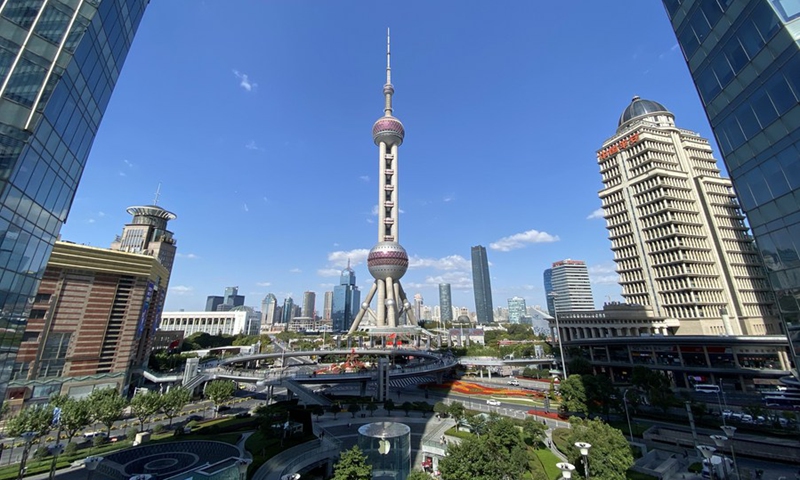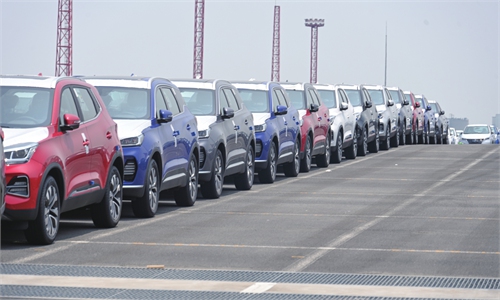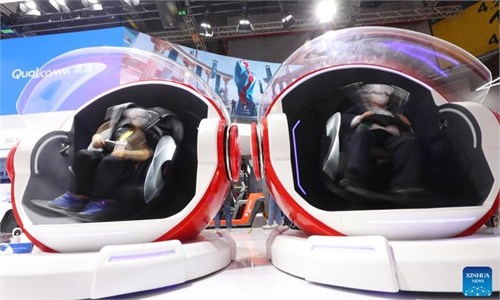Shanghai to ramp up innovations of future industries, focusing on AI, 6G, new energies and materials: official

Photo taken on Nov. 3, 2020 shows the view of the Lujiazui area of Pudong, east China's Shanghai.(Photo: Xinhua)
Shanghai plans to build 70 hydrogen refueling stations by 2025, with forecasted industrial scale of hydrogen energy to exceed 100 billion yuan ($13.9 billion), in a bid to promote the development of future industries, Shanghai Municipal Commission of Economy and Information said on Wednesday.
The digital economy, metaverse and intelligent terminals constitute the future of the city’s industry, Wu Jincheng, a senior official from the Commission said, adding that the integration and evolution of the new industrial lines will inject new dynamics to building a modern industrial system in Shanghai.
Future industries are mainly oriented towards future needs and represent the vision of human breakthroughs in information computing, quality of life, resource utilization and space expansion, Wu noted.
According to the official, the city will build five future industrial clusters in the fields of future health, future intelligence, future energy, future space and future materials.
Shanghai will promote R&D breakthroughs and industrialization of advanced nuclear energy as well as new-energy storage. For instance, officials plan for near 70 new hydrogen refueling stations to be built by 2025, three to five international first-class innovation and research platforms will be completed, and the industrial scale of the hydrogen energy industry will exceed 100 billion yuan ($13.9 billion).
The city will create a future health industrial cluster. In a bid to boost qualify of life and access to healthcare, the city will promote R&D breakthroughs and industrialization of brain computer interface, biosafety and synthetic biology.
Moreover, Shanghai will create a future intelligent industrial cluster. Facing the development of digitalization and intelligence, the city will promote technological R&D breakthroughs and industrialization of intelligent computing, artificial intelligence, quantum computing and 6G, to provide a smarter, more reliable and integrated technological base in the city.
In order to meet the needs of space utilization and expansion of deep sea and air, the city plans to build a future space industrial cluster, promoting deep sea exploration, air and space utilization and other technology R&D breakthroughs. For example, the city will develop heavy icebreakers, high-ice LNG ships and other polar equipment as well as manned electric vertical takeoff and landing vehicles to explore new modes of air traffic.
Shanghai also plans to create a future materials industrial cluster, promoting technological R&D breakthroughs and industrialization of high-end membrane materials and high-performance composite materials. The focus is to enhance the basic structure design of membrane materials and the ability of raw material autonomy, in order to provide strategic support for intelligent terminals and high-end equipment.
Wu noted that the city will set up 15 future industry pioneer areas related to the 5 future industry clusters, vowing to launch a number of high-end products using "Chinese standards".
According to the official, Shanghai officials are aiming to reach an output value of about 500 billion yuan in the sector by 2030.
“When the future industry technology matures, it may bring an output explosion, driving the development of varied aspects of the city from economy, lifestyle to society,” Wu noted.
Global Times


